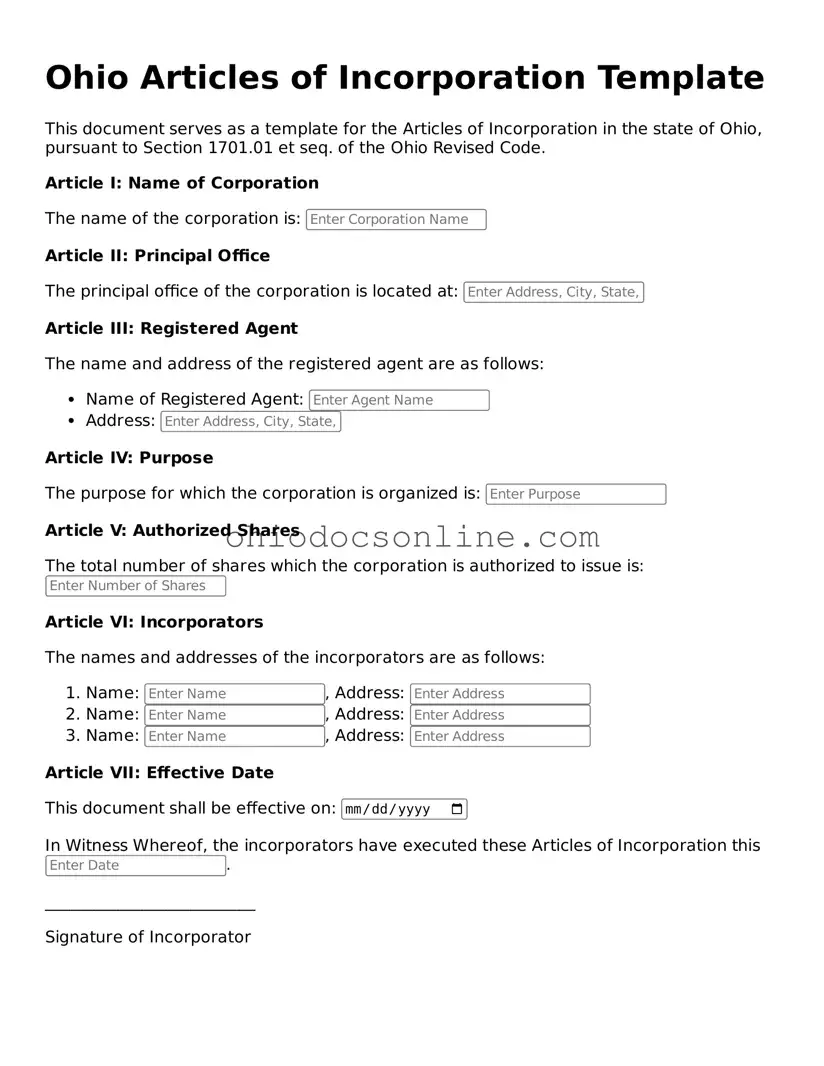Printable Articles of Incorporation Template for Ohio
The Ohio Articles of Incorporation form is a legal document that establishes a corporation in the state of Ohio. This form outlines essential details about the corporation, including its name, purpose, and structure. Filing this document is a crucial step for anyone looking to start a business in Ohio.
Open Editor
